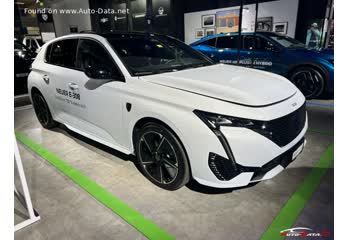Everything you need to know about specifications and performance - Peugeot 5008 2025 - 1.2 (145 Hp) Mild Hybrid e-DCS

Overview:
What is the engine capacity of a Peugeot 5008 2025?
The engine capacity of the Peugeot 5008 2025 is 1199.
Peugeot 5008 2025 How many horsepower?
The engine power of the Peugeot 5008 2025 is 136 Hp @ 5500 rpm..
What is the Peugeot 5008 2025 engine?
Peugeot 5008 2025 engine is EB2LTD. (Click to see other cars using the same engine)
How powerful is the electrical system in the Peugeot 5008 2025?
The power of the electrical system in the Peugeot 5008 2025 is 145 Hp hp.
What is the recommended oil for a Peugeot 5008 2025 engine?
The recommended oil for a Peugeot 5008 2025 car engine is 0W-30.
What type of camshaft transmission system is used in a Peugeot 5008 2025 engine?
belt is used to transmit motion.
General:
Engine:
Performance:
Electric system:
Space:
dimensions:
Powertrain, Suspension and Brakes:
See also

Other generation.
Its production began in 2020 until 2024

Same engine. (EB2LTD).
Its production began in 2023 until 2024

Same engine. (EB2LTD).
Its production began in 2025 until Now

Same engine. (EB2LTD).
Its production began in 2023 until 2025

Same production year and almost the same engine capacity.
Its production began in 2025 until Now

Write a comment